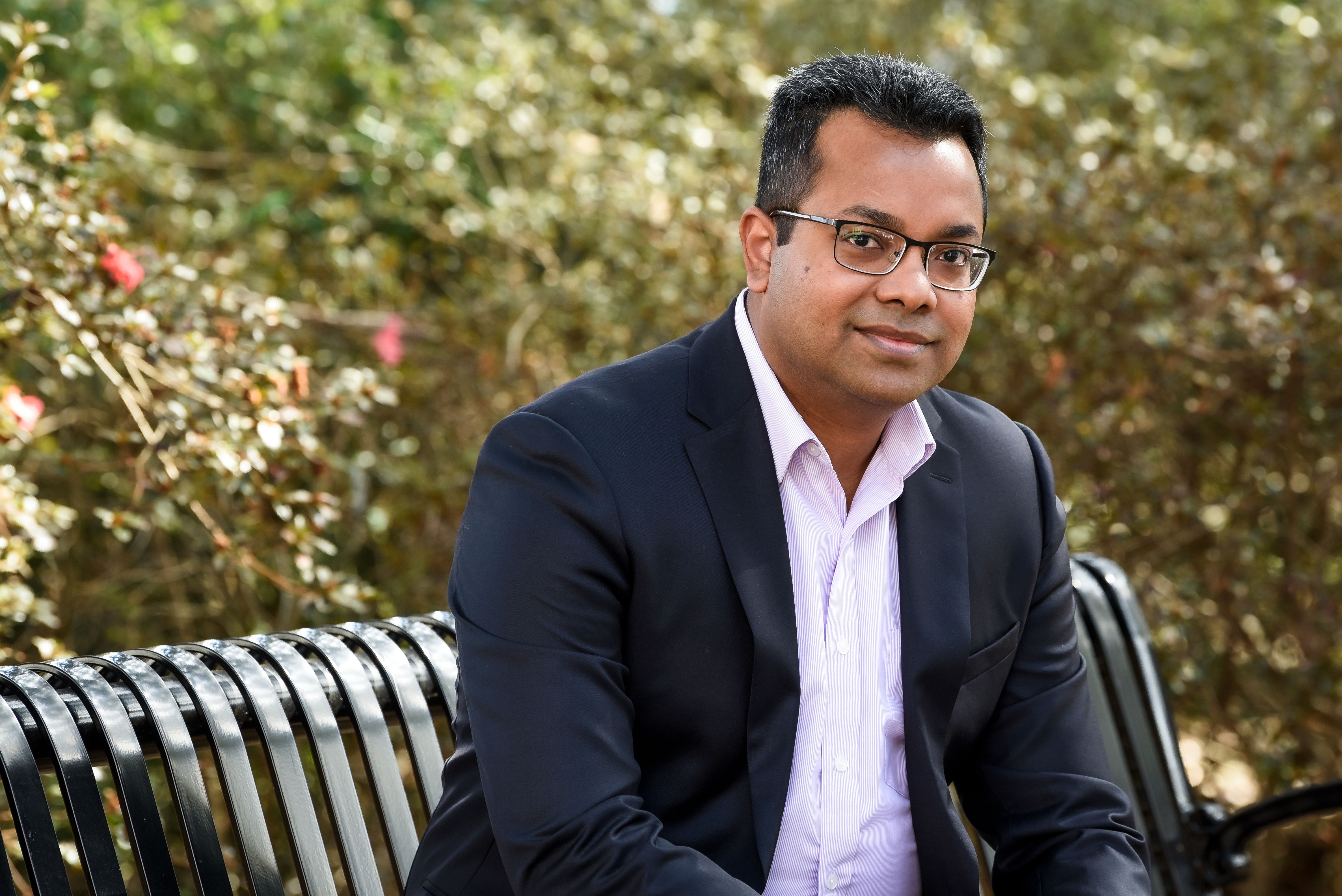GCSU Physics professor is principal investigator for two NSF grants

GCSU Physics professor is principal investigator for two NSF grants
Dr. Hasitha Mahabaduge, associate professor of physics at Georgia College & State University, is now the principal investigator in charge of managing two National Science Foundation grants totaling over a million dollars.
Recently, the university obtained a NSF EPIIC grant for nearly $400,000. EPIIC stands for “Enabling Partnerships to Increase Innovation Capacity.” Funded through August 2027, the grant supports Georgia College’s future collaboration with Athens State University and Southern Utah University to foster interdisciplinary projects with rural industries and hands-on learning opportunities for students.
Dr. Nicholas Creel, associate professor of business law, and Dr. Sayo Fakayode, chair of GCSU’s Department of Chemistry and Physics, were part of the proposal team for EPIIC.
“This has the potential to contribute to economic growth, enhancing the reputations of the institutions involved and strengthening community engagement,” Mahabaduge said. “The object is to facilitate the transfer of knowledge and technology from academia to industry.”
“Last year’s PIN grant got us started. We taught physics and business techniques to area residents that resulted in a solar-panel installation for Baldwin County,” he said. “This grant focuses more on green technologies. Our goal is to set up a new Institute for Entrepreneurship and Academic Innovation to spearhead future projects.”
Mahabaduge also leads a $650,000 NFS S-STEM grant awarded in March 2021 to increase graduation rates of students majoring in chemistry and physics. It connects college education to STEM careers. By February 2026, 18 financial scholarships will be given to high-achieving, low-income students.
Altogether, Georgia College now has five active NSF grants.
Others include:
- more than $500,000 directed by assistant professor of biology Dr. Arnab Sengupta for mRNA research
- nearly $166,000 managed by biology professor Dr. Samuel Mutiti for research of mine waste using phytoremediation and biofuel energy
- and nearly $100,000 overseen by Dr. Kristine White, associate professor of biology, to understand biodiversity of under-studied marine organisms in the South Caribbean.
According to the science foundation awards database, Georgia College received its first NSF grant of $20,000 in 1975. Since then, the university has received a total of 17 NSF grants.
“Getting 17 in the past 50 years shows how difficult it is to obtain NSF grants,” Mahabaduge said. “Out of those 17, only five were over $100,000. Four of them are still active, and I serve as PI for two—our largest and third largest. It’s a real honor.”
Mahabaduge believes in the university’s teacher-scholar model to provide mentorship and opportunities for students, using innovative research and evidence-based practices. He serves as PI on two other state and regional grants, as well.
In 2020 for excellence in teaching, Mahabaduge was named a Felton Jenkins, Jr. Hall of Fame Award recipient by the University System of Georgia. That year he was also named a fellow with the International Society for the Scholarship of Teaching and Learning.
In 2016, Mahabaduge was a GCSU Russell Library Faculty Fellow and, in 2017, he received a SoTL Fellowship from USG. In 2019, he participated in the Governor’s Teaching Fellows program at the University of Georgia. He also organizes Renewable Energy workshops for elementary school children.
“With the new NSF grant,” Mahabaduge said, “I’ll be serving as the PI for two concurrent grants worth over $1,000,000. The one-million-dollar mark for NSF grants is a personal milestone I set for myself when I started my journey as a researcher.”
“Receiving funds from NSF brings the university prestige, but it also comes with a lot of responsibilities,” he said. “With this grant, I know we can make a direct impact on all of our students, faculty and staff, as well as the community, supporting all five pillars of our strategic plan as we continue toward IMAGINE 2030.”